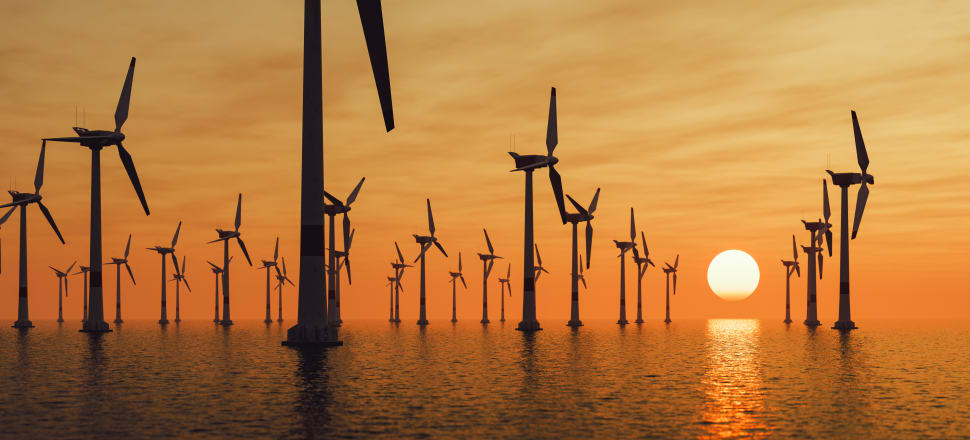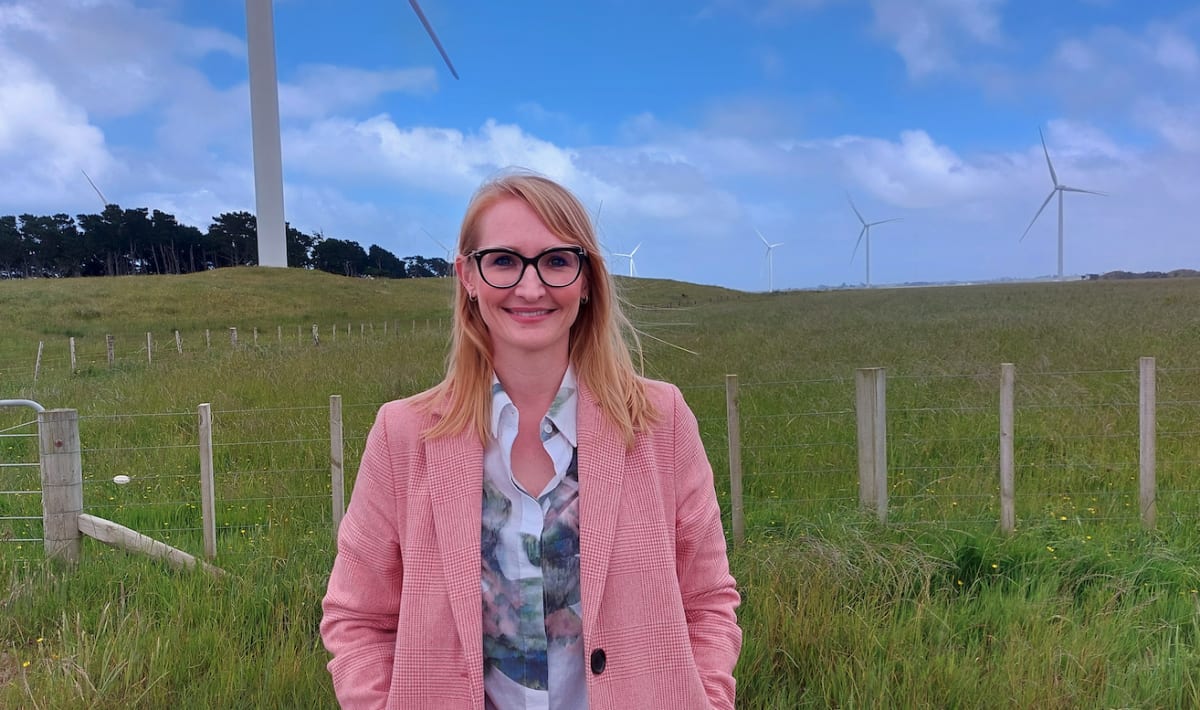
Action on NZ's backlog of infrastructure needs will require open minds on private and public financing, and active partnerships able to deliver at pace | Content partnership
As the demand for new infrastructure continues unabated, and New Zealand plays catch up on decades of underinvestment, there’s a call for Government to make offshore investment and private financing more attractive.
“The enabling legislation has been established, as well as the funding and financing tools,” says Laura Harris, Head of Infrastructure, Government and Specialised Finance at BNZ. “They now need to be used to address our infrastructure deficit.”
READ MORE: * Breaking the barriers between banks and the Māori economy * BNZ appeals to businesses to 'talk to us' as firms' costs rise
The laws Harris is talking about are the New Zealand Infrastructure Commission Te Waihanga Act 2019, the Infrastructure Funding and Financing Act 2020, the Urban Development Act 2020, the Kāinga Ora Homes and Communities Act 2019, and the Pae Ora (Healthy Futures) Act 2022.
While having these in place is a good step, Harris says the ability to “get on with” new funding and financing structures is among many challenges and opportunities facing the infrastructure sector.

Harris is in a good place to know. Formerly on the board of Infrastructure New Zealand, she has led the origination, structuring, negotiation and execution of the financing of project finance transactions including Public Private Partnerships (PPPs) and renewable electricity development.
Innovative funding and financing
The PPP model may need some tweaking, following a review by Te Waihanga, the New Zealand Infrastructure Commission. But taking the private sector out of the infrastructure financing picture risks slowing or even derailing essential infrastructure development work, Harris says.
Published in early 2021, a month before the more widely debated Transmission Gully review, the Te Waihanga review found the broad objectives of the country’s first eight PPPs had been largely achieved, although not without challenges. Te Waihanga endorsed continuation of the PPP model, but with modifications.
Last year there were no PPPs in the pipeline and Government policy meant there would be no partnerships on building prisons, schools and roads. Te Waihanga warned, “The current gap between projects creates a risk that experience and expertise on both the Crown and private sector side is not retained within the market.”
Harris says there are opportunities for PPPs and other innovative financing mechanisms to be re-introduced to cater for investment in water and social infrastructure projects.
“Most of the public discussion about PPPs is about the time and cost issues that have arisen on some projects, however what isn’t as often discussed is that numerous new schools have been delivered across NZ, on time and on budget, providing great facilities that allow the academic staff to focus on academics rather than building maintenance. Also, the first PPP in New Zealand, Auckland South Corrections Facility at Wiri, has delivered on the intended outcomes of reducing reoffending and recidivism, providing lessons the Department of Corrections can apply to the rest of their estate.”
For the layperson, innovative funding tools include: value capture (the associated re-zoning and price rise of land around transport hubs), development contributions, user charges, and tolling. Special purpose vehicles can apply a targeted rate. Innovative financing tools include PPPs, lease structures and the financing of special purpose vehicles to deliver infrastructure. Harris says while these tools are often described as innovative for New Zealand, they’ve been utilised and proven effective in other markets.
The funding tools enable the repayment of the long-term financing tools that provide greater opportunities to partner with the private sector, she says, to help accelerate delivery of infrastructure, and to add another layer of due diligence for the Government.
“By utilising private finance for these projects, you have other parties involved considering the risk transfer and allocation as well as value for money. Special purpose vehicles can be used to ring-fence that risk and allocate it to the party most capable of managing it.
“Outsourcing financing of these projects also means there’s a strong focus on the lifetime cost of an asset. This helps decision makers determine where they want to make trade-offs.”
But right now, Harris says there are limited partnership opportunities presented in the Government’s work pipeline, in stark contrast to Australia, for example, where there are significant - and visible - infrastructure builds planned by state governments.
Te Waihanga has been collating a pipeline of planned works which have funding certainty.
“The industry is looking for a next step, for that list to be refined, with even greater certainty and funding in place,” Harris says. “That’s the evolution of the pipeline that’s needed. The market is looking for stronger assurances than currently exist for these investment opportunities to be realised.”
She warns there’s no time to wait, as the global race to repair and rebuild aging infrastructure, as well as building new infrastructure, is highly competitive. The private sector isn’t seeing that ‘need for speed’ from the Government, even though a successful model exists in healthcare.
“While there’s still a deficit of infrastructure for large scale hospitals, a lot of healthcare is provided in privately owned facilities in NZ which receive lease payments or funding subsidies from Health New Zealand to provide services. These payments enable private owners to arrange finance. So in that sector, in particular, the Government isn’t worried about ownership of the land or the building itself, just ensuring that the services meet the required standards.”
Iwi attractive partners
Harris says she’s also seeing more opportunities for iwi to partner the Government, and infrastructure is a good fit for Māori, for whom kaitiakitanga or guardianship and a strong sense of intergenerational responsibility come naturally.
This year Ngāti Toa Rangatira reached a Treaty of Waitangi settlement which involved buying 40 schools across Porirua and Wellington and leasing them back to the Government on a renewable basis.
“Off the back of that lease, Ngāti Toa was able to raise financing so that they can now pay off the purchase over the term of the lease and get the benefit of cashflows from the asset for generations and to reinvest in their community. That’s a good example of Government and private sector collaboration in funding and financing.”
BNZ was involved in the project and Harris sees a considerable role for Māori in addressing New Zealand’s infrastructure underinvestment through partnerships.
“Iwi have access to capital, and they’re a natural partner. There are some great examples where iwi already have strong infrastructure ownership and development capability, in particular geothermal electricity generation. New procurement guidelines focus on social outcomes too, requiring greater consideration of iwi in terms of community engagement and job creation.
“For global investors looking to invest in New Zealand assets, it makes sense to partner iwi, because they understand the local community, stakeholders, and any sensitive land issues. Iwi partnership enables success.”
Growing investment in renewables
There are increasing opportunities for investment in renewable electricity projects, Harris says. A recent report by consulting firm BCG projected it would take eight years and $42 billion to decarbonise New Zealand’s electricity sector, including roughly $16 billion of new funding.
Report co-author Richard Hobbs says there are already committed investment dollars and projects on track to reach 91 percent of renewable electricity by 2025, but in the second half of this decade it will take a doubling of our efforts to get to 98 percent renewable electricity and 4.8 gigawatts of new renewable power by 2030. Harris says for all that, the industry is optimistic.
“100 percent renewable electricity is the ambition, but renewable electricity has issues with continuity of supply, because of the intermittency of generation from solar and wind farms. So we need storage solutions too.
“Those in the industry ask ‘why stop at 100 percent?’ why don’t we have a goal for New Zealand that is much greater than that and actually consider renewable electricity as something we could export, whether that’s in the form of green hydrogen or ammonia. And if it’s also used here to create new processes - say to power data centres or in manufacturing - maybe we could change our productivity on a grand scale?” says Harris.
BNZ has an overall sustainable finance target of $10 billion by 2025 and Harris considers financing renewable electricity development will be a large part of that.
Among other clients, it’s working with Hiringa Energy, a green hydrogen provider developing hydrogen production powered by new renewable electricity generation alongside building and operating hydrogen refuelling stations. In early November the High Court dismissed an appeal over consent granted for Hiringa Energy’s Kapuni Green Hydrogen Project, paving the way for construction to begin. Its refuelling network is expected to be operational in the North Island during 2023.
But Harris believes New Zealand’s greatest untapped potential lies in grid-scale solar energy, onshore wind, and even more, offshore wind energy.
“There’s a lot of activity in the market at the moment with developers considering these three areas. The largest grid-scale solar farm we have here currently is 2.1 megawatts, whereas developers are now considering 400-500 megawatt farms. So there’s significant scale available. The same with wind.”
Soon after the Hiringa go-ahead came through, a consortium made up of BlueFloat Energy, Energy Estate and Elemental Group announced development of a 65-turbine offshore wind farm in South Taranaki, the first of four offshore wind projects in Taranaki, Waikato and Southland.
Like others, Harris says New Zealand needs to take a systems approach to infrastructure development as it looks to decarbonise. She uses the example of natural gas.
“Our reduced reliance on natural gas poses challenges in that it provided security of energy supply. New Zealand has had to burn more imported coal from Indonesia this year because of low hydro lake levels and gas shortages due to reduced investment in the sector. So we can’t consider gas independently. We need to look at the broader story across the whole economy as we transition.
“Because we need electricity storage that hasn’t been developed or is not available at scale in New Zealand yet, gas will continue to play a role in our energy security and equity, to ensure power is affordable.”
Harris says it’s that kind of thinking – considering broader outcomes and collaboration – that’s required for effective infrastructure development. “Good infrastructure enables greater wellbeing and productivity, and the private sector is willing and able to partner with Government to deliver it at the pace we need, and that future generations deserve.”
BNZ is a partner of Newsroom.
This article is solely for information purposes. It’s not financial or other professional advice. For help, please contact BNZ or your professional adviser.
No party, including BNZ, is liable for direct or indirect loss or damage resulting from the content of this article. Any opinions in this article are not necessarily shared by BNZ or anyone else. References to third party websites are provided for your convenience only. BNZ accepts no responsibility for the availability or content of such websites.







